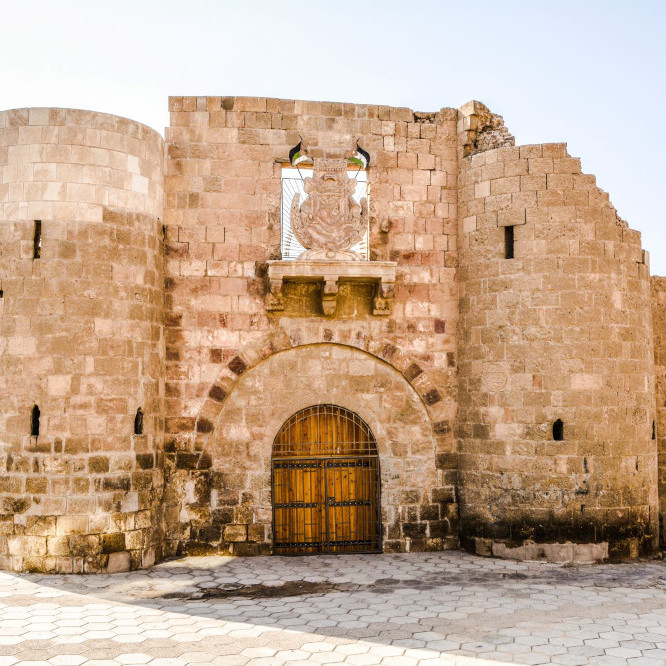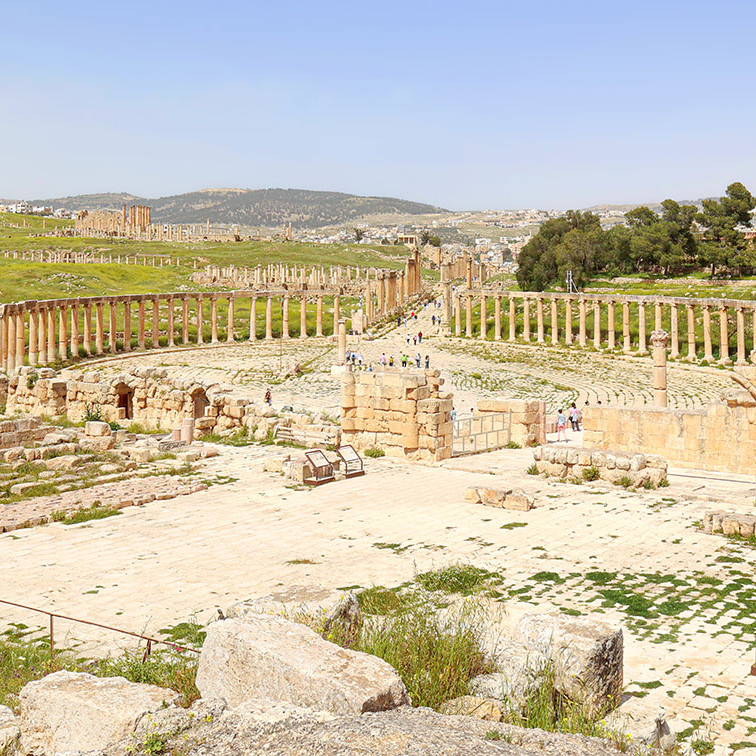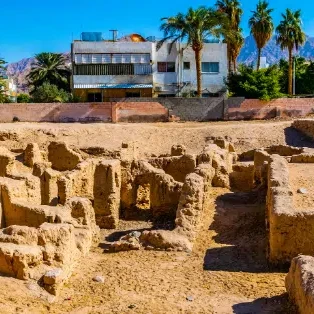
Aqaba Fort
A quiet coastal stronghold with Ottoman, Mamluk, and early Islamic layers.
Aqaba Fort stands near the shoreline of Jordan’s southernmost city. Known locally as the Mamluk Castle, the structure dates back to the early 16th century, though parts of the site incorporate older foundations. Over time, the fort was expanded and reused by various rulers, including the Ottomans, who turned it into a garrison. Today, the site remains modest in scale but rich in historical traces, quietly overlooking the sea and the nearby flag plaza.
History of the Site
The current form of Aqaba Fort was largely shaped under the Mamluks in the early 1500s, with later modifications by the Ottomans in the 17th century. However, the area itself had strategic importance for much longer due to its location along trade and pilgrimage routes connecting the Levant, Egypt, and Arabia.
During the Arab Revolt in 1917, the fort played a minor role in the broader capture of Aqaba—an event often associated with T.E. Lawrence (Lawrence of Arabia). A plaque outside the entrance commemorates the campaign, which marked a turning point in the Ottoman withdrawal from the region.
What You’ll See
The fort’s structure includes a square inner courtyard, thick stone walls, and watchtowers. Inside, you’ll find:
- Reconstructed walls and towers, showing Mamluk-style crenellations and arched openings.
- Inner rooms, once used for storage or housing troops.
- Small exhibits in some of the restored chambers, displaying tools, coins, and local ceramics.
- Inscribed stones, including Arabic calligraphy carved above the entrance gate.
From the rooftop, you can see the Gulf of Aqaba and the large Jordanian flagpole that now marks the public square next to the site.
Visiting Experience
The fort doesn’t take long to explore—most visits last 30–45 minutes—but it offers a chance to slow down and take in Aqaba’s historical texture. The atmosphere is usually quiet, especially in the early morning or just before sunset, and the surrounding area includes palm trees, shaded benches, and views of the waterfront.
Nearby Context
Aqaba Fort pairs well with a short walk through the Aqaba Archaeological Museum next door, which houses small finds from the city’s early Islamic and Roman periods. Together, they offer a broader sense of how this coastal city evolved from a trading port into a fortified outpost and modern border town.
Location
Hours
Open Sunday – Thursday & Saturdays 8:00 AM–5:00 pm / Fridays & Saturdays 10:00 am – 5 pm
Entrance Fee
3 JD ($4.23) for tourists, free with Jordan Pass
Are you ready to start discovering Jordan?
I decided to book a tour when I went to Jordan and they simplified my planning and enhanced my travel experience ! I’m leaving the link to the tour below in case you are interested!
More things to do in Jordan
Souk Jara: A Summer Market Full of Local Flavor in Amman
Discover Souk Jara, Amman's vibrant outdoor market where local artisans, food vendors, and musicians gather every…
Beaches in Aqaba
Aqaba’s coastline offers access to quiet beaches, shallow coral reefs, and clear waters ideal for snorkeling and…
Ruins of Jerash
Step back in time at Jerash, one of the best-preserved Roman cities outside of Italy. Discover what to see, tips for…
Wadi Rum: Jordan’s Desert Dreamscape
Wadi Rum, also known as the Valley of the Moon, is a natural wonder located in the heart of Jordan. This desert of red…
Ruins of the City of Ayla
The Ruins of the City of Ayla in Aqaba, Jordan reveal the layout of a fortified Islamic town from the 7th century,…
Amman Citadel
The Amman Citadel, also known as Jabal al-Qal'a, is a historical site located in the heart of Amman, Jordan. It is one…
Ajloun Castle: A Day Trip into Jordan’s Crusader Past
Explore Ajloun Castle in northern Jordan—an epic 12th-century fortress with sweeping hilltop views. Learn its history,…
The Roman Theater in Amman: A Glimpse Into Jordan’s Ancient Past
Discover the Roman Theater in Amman—one of Jordan’s most iconic landmarks. Explore its history, what to expect during…










